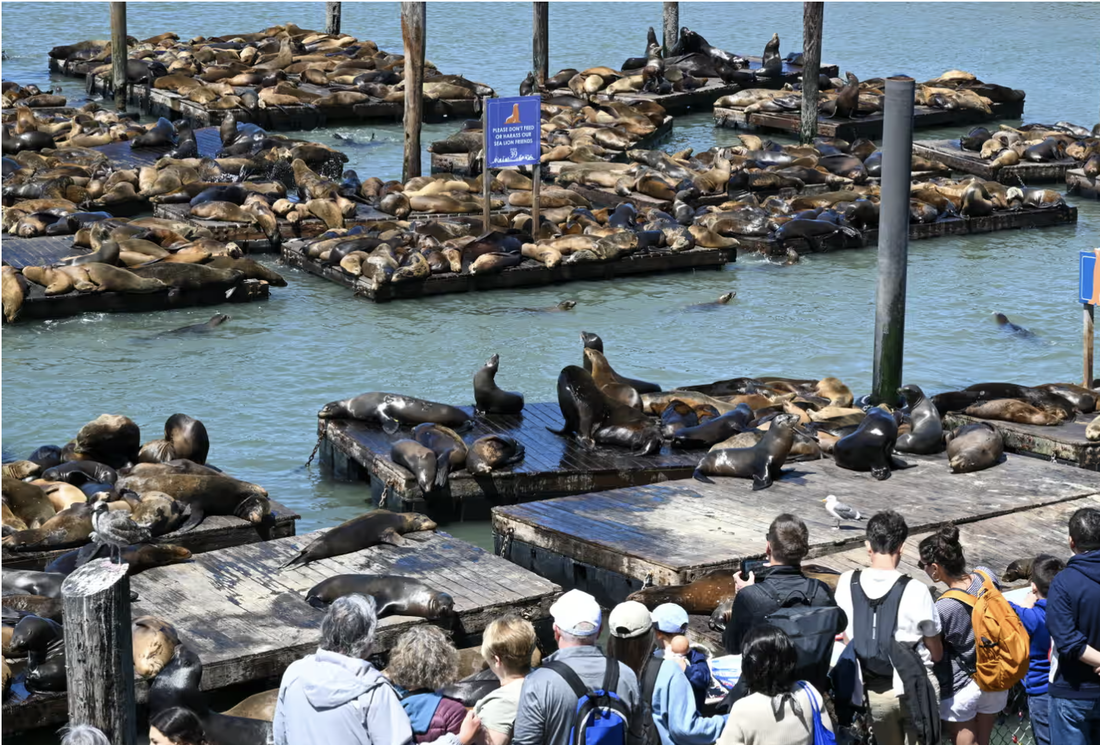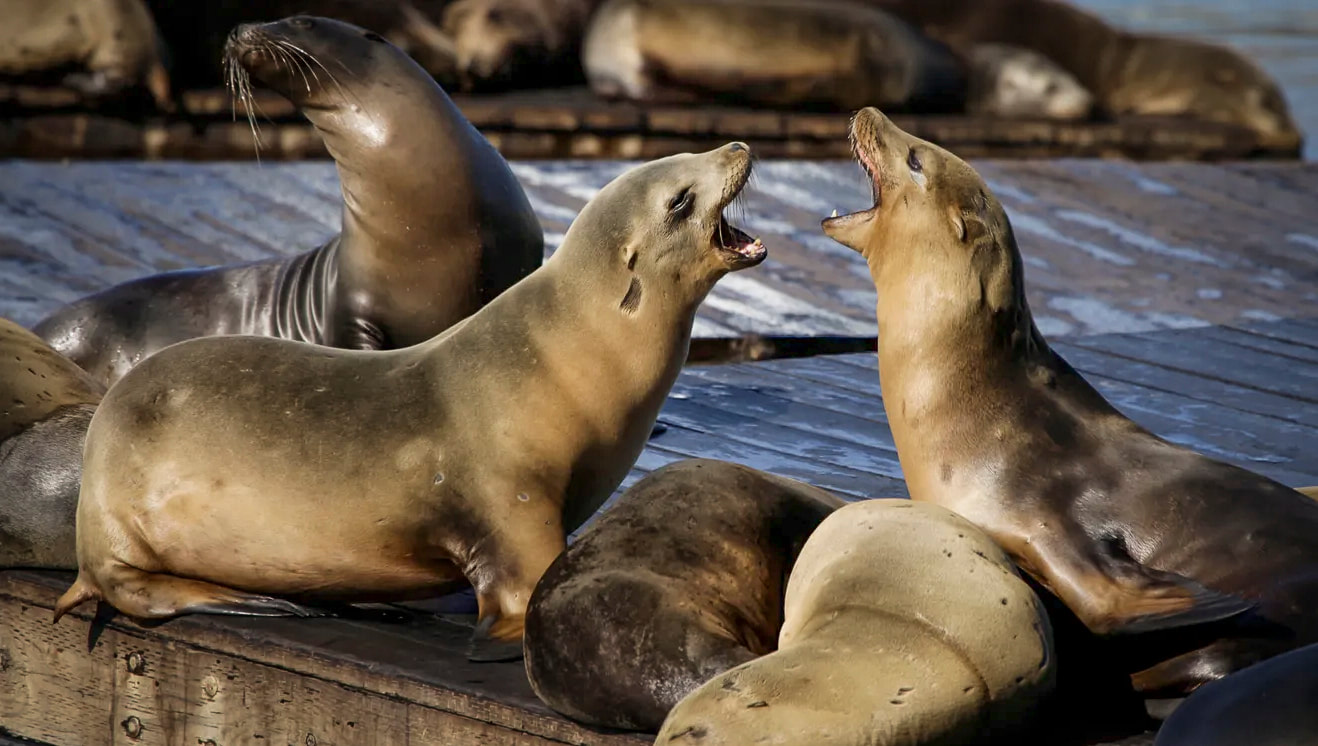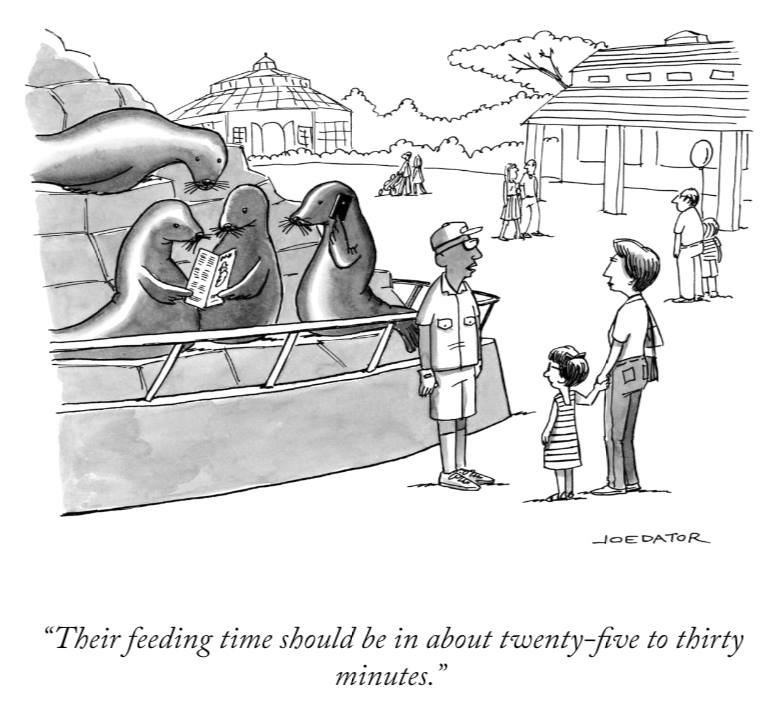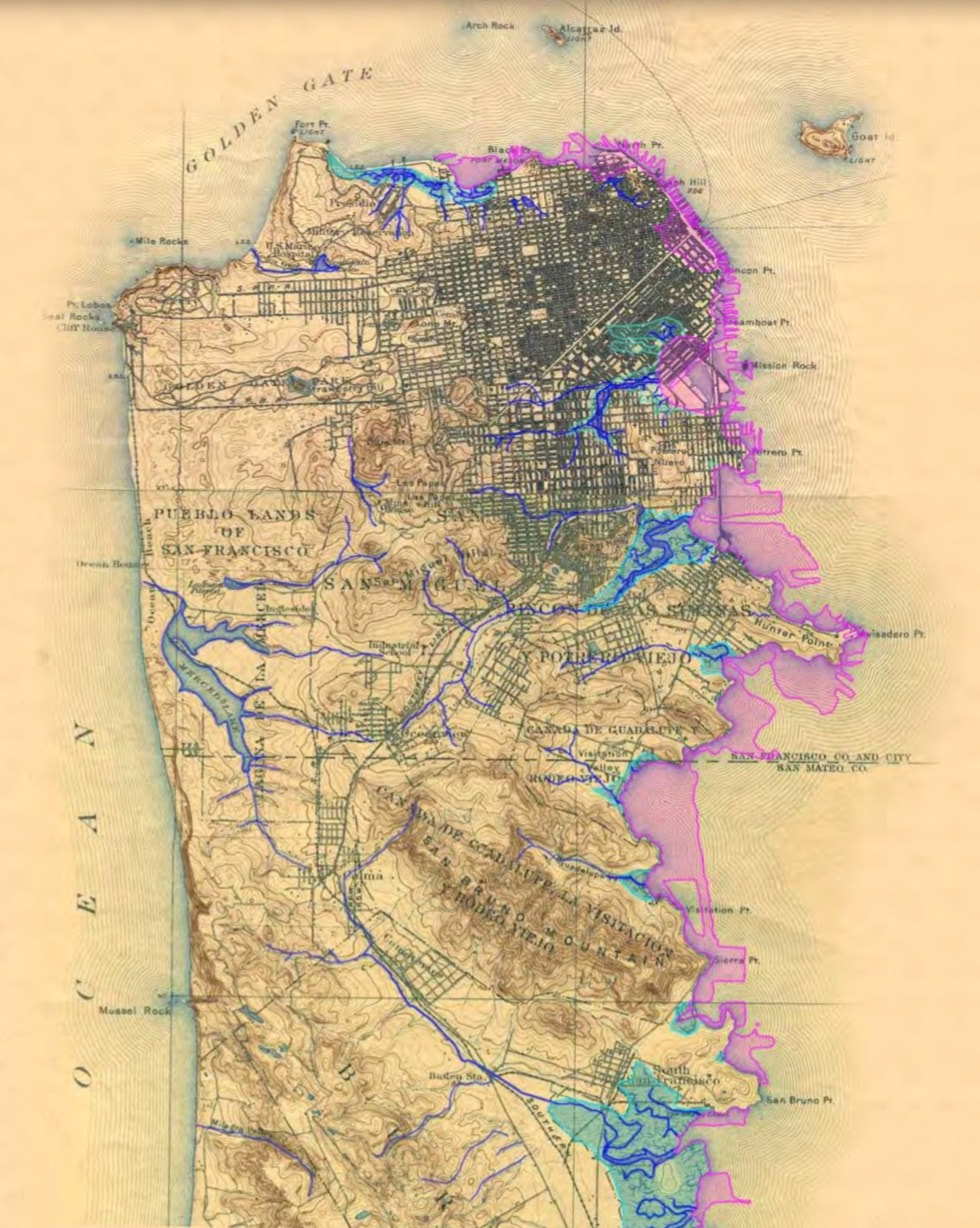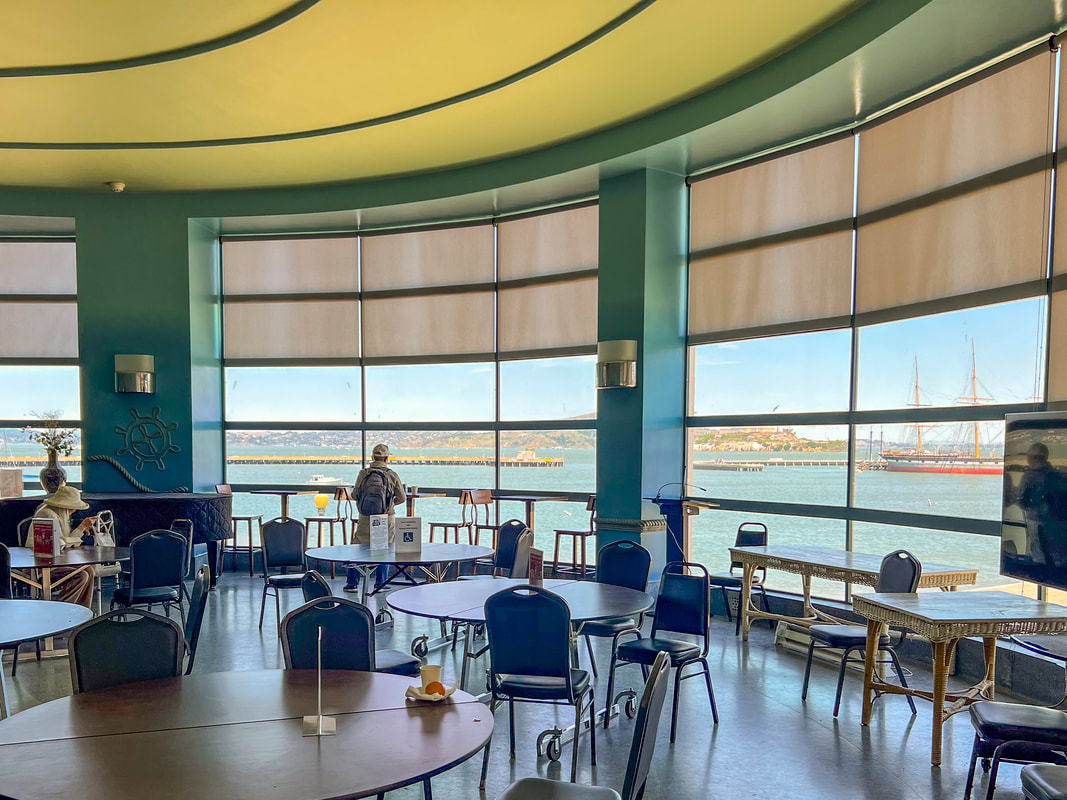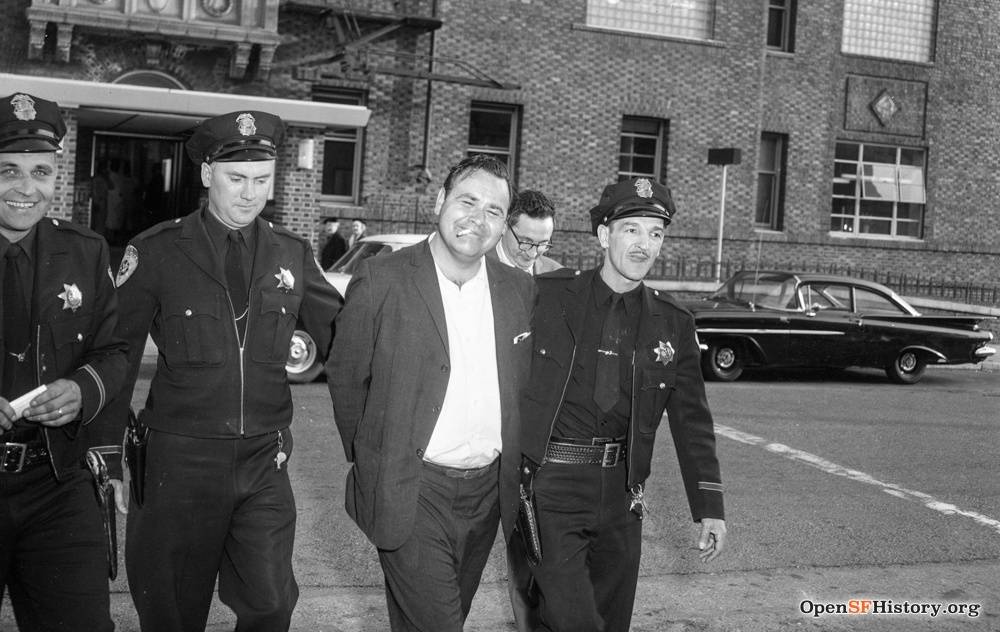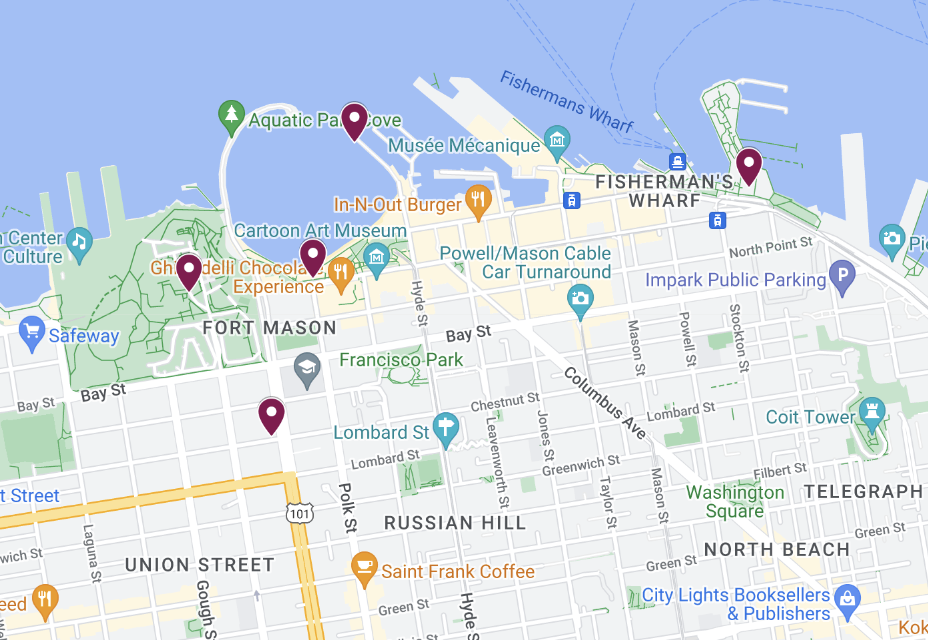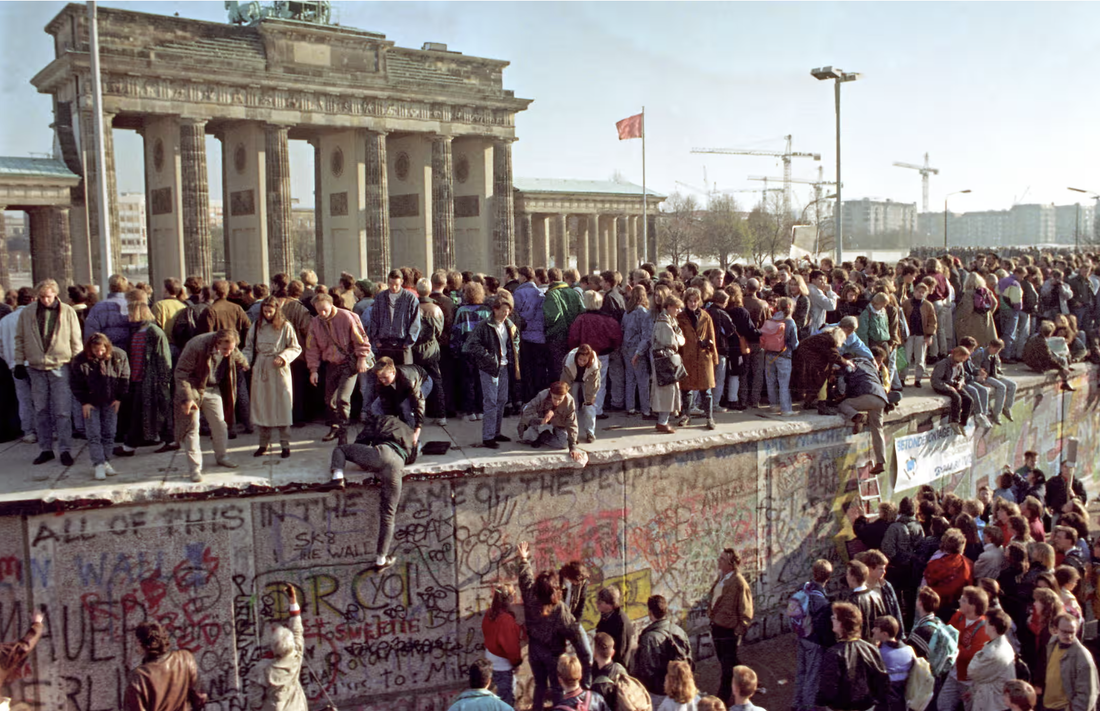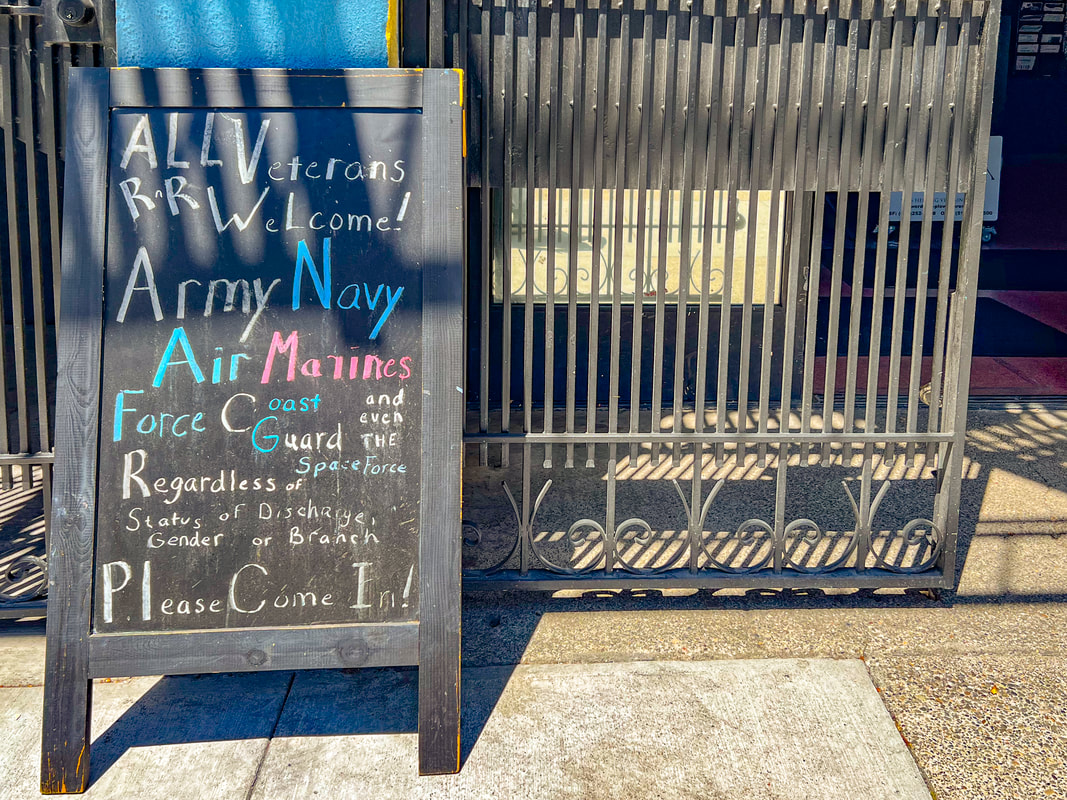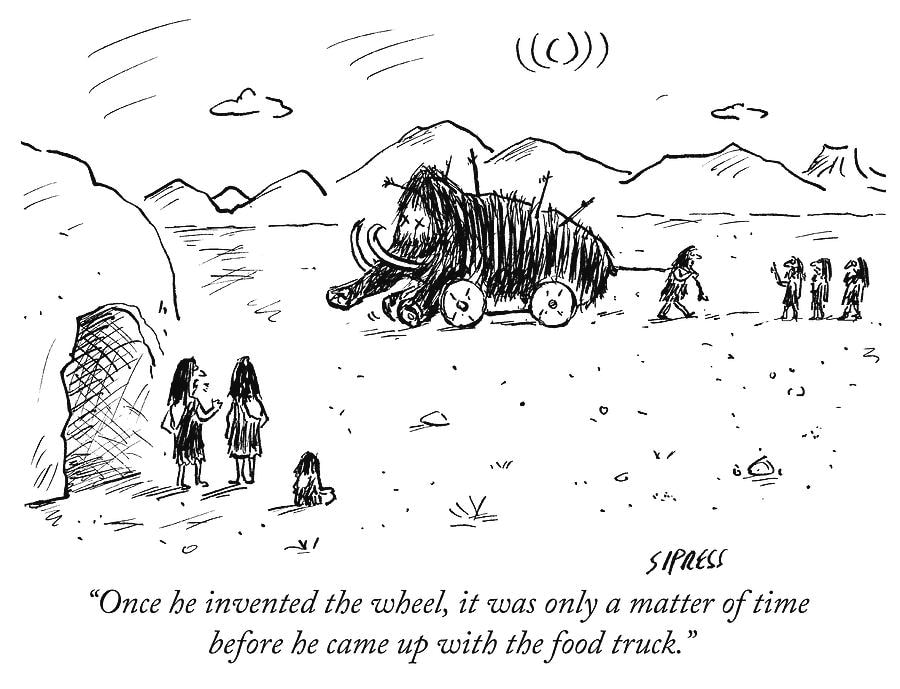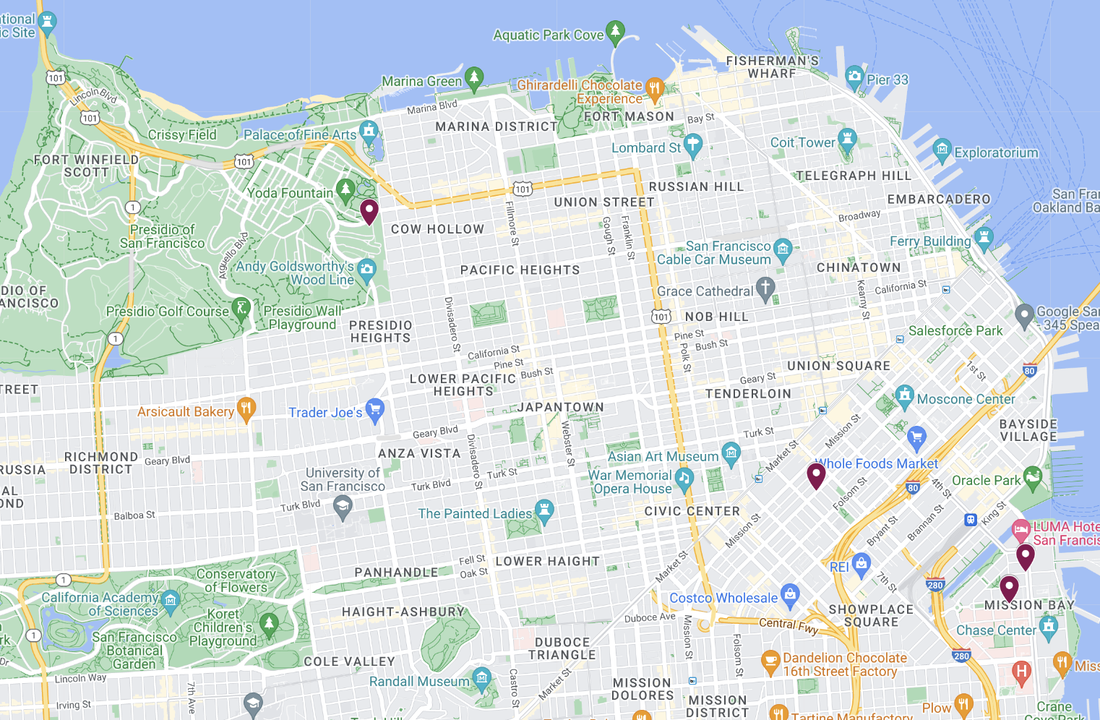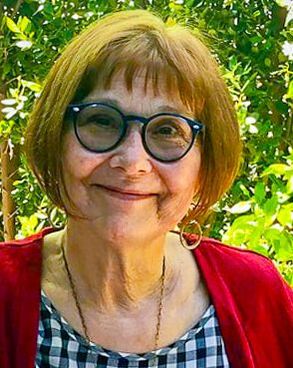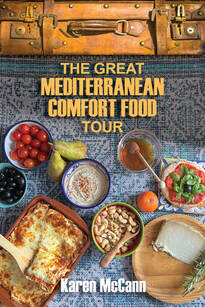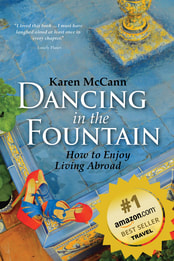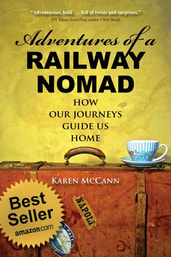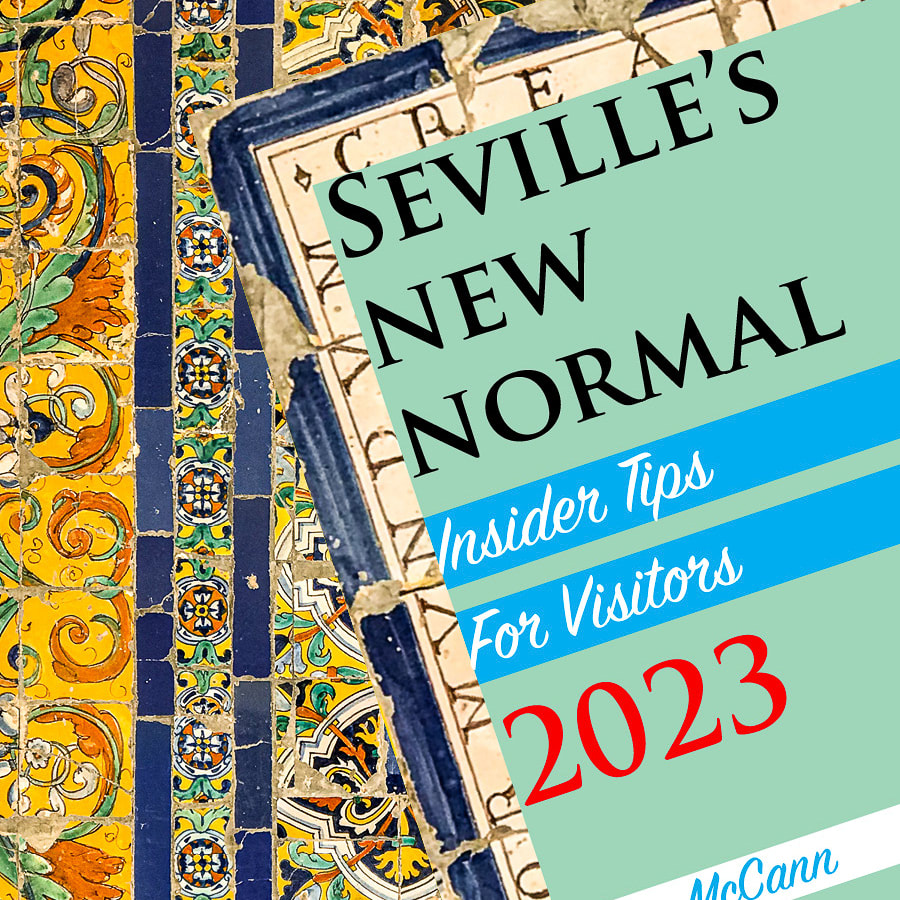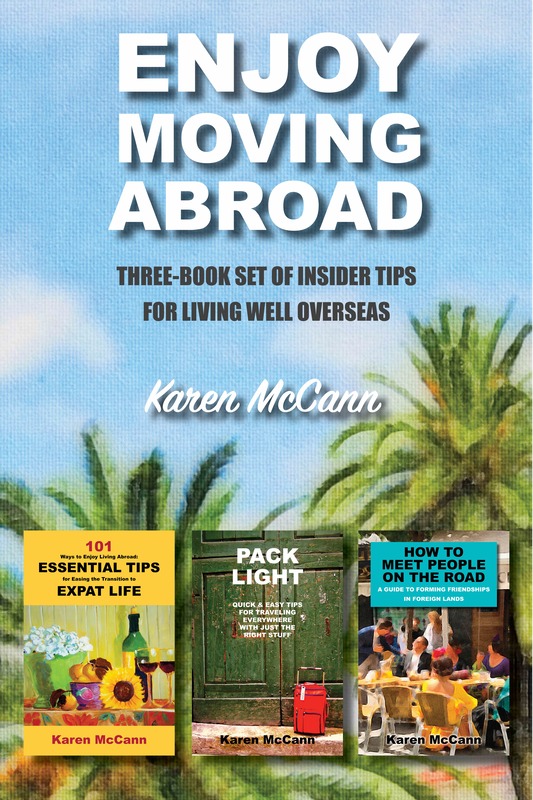|
“The Tenderloin isn’t always easy on the eyes,” says the museum poster, in a massive understatement. “But what the neighborhood is missing in polish, it makes up for in grit and soul.” Thrill-seekers that we are, Rich and I decided to take a walk on the wild side this week and visit San Francisco’s most notorious district, the 31 square blocks known as the Tenderloin. Naysayers consider it the epicenter of the apocalypse where crime, poverty, and drugs are dragging San Francisco down into the ninth circle of Hell. Young friends tell me they go there often, without fear, for work and play. So what’s the truth? I decided go see. All this week, whenever I told friends that Rich and I would be touring the Tenderloin, I got horrified looks and questions about whether my shots, my running shoes, and my estate planning documents were all in order. I kept assuring everyone Rich and I had a very, very good chance of getting through the visit alive and unscathed. Not to keep you in suspense, we did. San Francisco’s Tenderloin is the last of its name in the nation, but a century ago many major American cities had a Tenderloin district where people went to commit shenanigans they didn’t want their neighbors to see. The name was allegedly coined in 1876 by NYC Police Captain Alexander “Clubber” Williams when he was assigned to a notorious red light district. Thrilled at the prospect of collecting higher bribes, he wisecracked, “I’ve been having chuck steak ever since I’ve been on the force, and now I’m going to have a bit of tenderloin.” Do-gooders keep trying to rename San Francisco’s Tenderloin, most recently in 2011 when PETA (People for the Ethical Treatment of Animals) pressured then-mayor Edwin M. Lee to call the neighborhood “the Tempeh District.” Not surprisingly, the idea of giving the Tenderloin a soy-based vegan makeover didn’t fly. Growing up in the Bay Area, I had a sketchy idea the Tenderloin’s history involved houses of ill repute, Prohibition-era speakeasies, LGBTQ bars, gambling joints, pinball parlors, jazz clubs, adult theaters, drug dens, and frequent police raids. Miles Davis, the Grateful Dead, Queen and other artists made music on its sound stages. Dashiell Hammett wrote The Maltese Falcon there. Muhammad Ali, George Foreman, and Sugar Ray Robinson trained in the boxing ring in the basement of the Cadillac Hotel. It was a happening place. But the tide of drugs and homelessness kept rising, and decades of election-year promises made by politicians to clean up this “zone of terror” were about as effective as most election year promises. Which is to say not at all. Luckily, the Tenderloin had its very own patron saint in Glide Memorial’s legendary pastor, Cecil Williams, and a street-savvy unofficial mayor called Del Seymour. Among his many forms of outreach and public service, Del provides tours of the Tenderloin. “There’s a rich history here. I show what’s vibrant in a neighborhood that’s considered ‘gritty’ and ‘seedy,’” he says. Filled with curiosity, Rich and I signed up and met Del at his headquarters. “I run a school, it’s called Code Tenderloin,” Del explained. “And what we do, we take people as they are, right off the street, out of our shelters, out of our missions, out of our tents … and we get them ready for jobs in the tech industry.” He also assigns people to stand on street corners and keep the peace. Judging by the complete lack of violence or even raised voices everywhere I went, they are good at it. Our first stop was Glide Memorial Church. When Cecil Williams became pastor in 1963, it was a sleepy congregation of a few dozen souls. He transformed it into a countercultural icon and one of the most famously liberal churches in America. His pastoral vision included caring for “the least of these” with everything from hot meals to genuine respect. After mandatory retirement at 70, he was hired as the Minister of Liberation, a post he held until last year; he passed last month at the age of 94. Today the Glide Foundation runs 87 social services such as childcare, after-school programing, emergency supplies, shelter beds, HIV testing, Covid vaccines, and three meals a day. “It’s fried chicken day,” Del said, as the heavenly smell wafted through the pristine dining room. “It’s very popular.” Del wasn’t kidding about the chicken's popularity; the line outside extended for blocks. As we walked along it, I can tell you that yes, the general look was pretty rough — somewhere between the barroom scene in Star Wars and a demilitarized zone. But everyone was remarkably well-behaved; nobody was about to jeopardize their chance at that fried chicken. Dozens greeted Del by name, with a smile, a handshake, a few words of appreciation. Our tour took us all over the neighborhood: to the lively and engaging Tenderloin Museum, St. Anthony’s free family medical center, America’s first official Transgender community, and a new housing project. I began to appreciate the complex web of financial support — from government, churches, community groups, and private donors — that enabled 25,000 marginalized residents to come together and function, however loosely, as a community. I suppose to some this must seem like rearranging deck chairs on the Titanic. You might be wondering if there’s any point. Can the cycle of poverty and drugs be broken? Are such lost souls ever saved? Well, just ask Del about that. Del's life started off much like Rich’s, with Catholic schools and military service in Vietnam. After that he became a firefighter in LA, with a home and family. “Then I came to San Francisco, ran into a neighborhood called the Tenderloin, and to make a long story short, it took me 18 years to get that crack pipe out of my mouth,” he said in his TED talk. “Living homeless, living in tents — when I wasn’t in jail.” Then one day Walter Hughes, an elder of the Tenderloin’s San Francisco Christian Center, met Del in a park, bought him a suit, and invited him to church. “They embraced a crackhead in the middle of the church.” I could hear the awe and gratitude in Del’s voice as he recalled that day. “And we prayed together, we cried together. He wasn’t pushing me. He just started showing me the way to a better life.” Del's words reminded me of the old story about a man walking along the beach after a storm had washed up thousands of starfish on the sand. He picked up one and threw it in the water, then another. A passerby said, “What are you bothering with that for? There are way too many, you’ll never make a difference. “ The man threw another into the sea. “Made a difference to that one.” Taking the Tenderloin tour was a valuable reminder that the world is full of stranded starfish; sometimes we’re one of them, sometimes we’re the guy on the beach, and sometimes we’re the passerby, wondering how to make sense of it all. Del's Tenderloin Tour: [email protected] The Tenderloin Museum: 398 Eddy at Leavenworth Glide Memorial Church: 330 Ellis Street This post is part of my ongoing series OUT TO LUNCH IN SAN FRANCISCO My goal is to discover some of San Francisco's most colorful neighborhoods so I can check out what's really going on in this zany town. Are we in a doom loop? Already on the rebound? Still fabulous? And where should we eat afterwards? These and other questions will be explored in upcoming posts. DON'T MISS OUT! If you haven't already, take a moment to subscribe so I can let you know when I publish my weekly posts. Just send me an email and I'll take it from there. [email protected] And check out my best selling travel memoirs & guide books here. PLANNING A TRIP? Enter any destination or topic, such as packing light or road food, in the search box below. If I've written about it, you'll find it.
9 Comments
Waymo’s driverless taxis move through traffic like my high school driver’s ed teacher: maintaining the exact speed limit, meticulously obeying all laws, showing an excess of caution and courtesy at all times. Unlike some human cabbies I’ve known, my invisible robot drivers are never drunk, stoned, lecherous, lost, or seething with road rage. They never talk your ear off or expect a tip, either. So you can imagine how gobsmacked I was when my driverless taxi seemed to suffer a panic attack in a tiny cul-de-sac near the top of San Francisco’s Telegraph Hill. It happened last Friday, right after Rich and I got out and started up the steps leading to the summit. Our Waymo — apparently noticing for the first time just how tight the cul-de-sac was — began saying in a loud, cheerful voice, “Hey there, I'm planning to move but need more space. Can you back up please?” Unfortunately, it was making this request to a row of parked cars. Not surprisingly, they remained unmoved. “Hey there,” repeated the Waymo. “I'm planning to move but need more space. Can you back up please?” Maybe it was my imagination, but by the fourth or fifth repetition, I had the distinct impression a note of panic was creeping in to its tone. “Hey there…!” “You do know that Einstein said, 'Insanity is doing the same thing over and over and expecting different results.'" Finally it fell silent, as if thinking furiously. By now a few amused pedestrians had gathered on the sidewalks to enjoy the spectacle of the flummoxed robot. What I suspect happened next was that a distress signal alerted somebody in the mothership — I’m guessing a human — who proceeded to override the vehicle’s programming and navigate by remote control. Eventually, with the reluctant air of one acting against its better judgement, the Waymo inched forward into the middle of the intersection and stopped, its rooftop sensors whirling around anxiously. Then it executed a glacially slow, cautious three-point turn and drove off, followed by the spectators’ chuckles. “Whew,” said Rich. “For a minute I thought we were going to have to push it out of here.” We resumed our climb upward toward one of San Francisco’s highest, most famous, and least visited landmarks, Coit Tower. Every article I read suggested the best way — nay, the only way — to visit Coit Tower is to walk up the 600 stairs known as the Filbert Steps, so you can pause and admire the views from every angle. Obviously these articles were written by youngsters too inexperienced to realize you get the same views going down, with a lot less stress on your knees. Being savvy travelers, Rich and I took Waymo as high as we could; from the cul-de-sac, I’d heard it was “just” a three-minute walk up some steps. Whew! Arriving breathlessly at the top, I paused to admire the 210-foot tower built to honor the dying wishes of the wild, wealthy, eccentric Lillie Coit (1842 – 1929). At the age of seven, “Firebelle Lil” watched her mother burn the family plantation rather than lose it. Two years later, SF firemen rescued Lillie from a flaming building. When she was fifteen Lillie ran to help firefighters struggling to push an engine up Telegraph Hill. She soon became an honorary firefighter, riding along when the brigade was called out, participating in banquets and parades. A true Victorian thrill-seeker, she was a sharpshooter and wore trousers so she could sneak into male-only North Beach clubs to gamble and smoke cigars. Upon her death, Lillie was cremated and interred with firefighting memorabilia. She bequeathed a third of her fortune to the city to add something to its beauty. Coit Tower opened in 1933, and to this day, officials insist it's NOT supposed to represent a firehose nozzle. They can’t understand why nobody believes them. I’ll let you be the judge. Coit Tower appears in many films, including Vertigo, where you constantly see it behind Jimmy Stewart. Asked why, Hitchcock said, “It’s a phallic symbol.” I guess it’s all in the eye of the beholder. Inside, Coit Tower’s walls are filled with spectacular murals from a 1934 pilot project for what would become the New Deal’s WPA. Told to paint “aspects of life in California,” many artists indulged in sharper social commentary than expected. Shortly before the grand opening, horrified officials noticed commie themes — the hammer and sickle provided the first clue — and in the ensuing uproar, changes were demanded and refused. In the end, someone painted over the hammer and sickle and the banner for the communist periodical Western Worker, but everything else remained. Here, for instance, the man in green pulls out a copy of Karl Marx’s Das Capital (spelled incorrectly; it’s Kapital). The 91-year-old elevator was out of order, and Rich and I decided not to pay $10 for the pleasure of climbing 234 stairs (each way!) to see the view. We figured descending 600 Filbert Steps would be enough exercise to work up an appetite for lunch. The gardens along the steps were a delight, thanks to the green thumb of Grace Marchand. In 1949 the 63-year-old artist, former stuntwoman, and Liberty Ship builder moved into a house at the corner of Filbert Steps and Napier Lane. She began planting flowers, and over the next 33 years, the garden became a community treasure. After Grace died at home in her own bed at 96, neighbors kept up the gardens, protecting them from developers, coyotes, and other predators. I kept an eye out for the cherry-headed conures made famous by the heartwarming, award-winning 2003 documentary, The Wild Parrots of Telegraph Hill, the story of a formerly homeless musician who adopts a flock of feral parrots. The film is now being remastered to show in theaters. Sadly, I didn’t see any wild parrots, although to be fair I was too busy concentrating on my footing to look around properly. At the bottom of the hill, I stumbled gratefully onto level ground and made a beeline for one of my favorite bars, Pier 23. This classic waterfront eatery was a haunt of Rich’s back in the 1980s, when happy hour was enlivened by a woman who played two saxophones at once. There’s plenty of loony memorabilia, including a vintage condom machine, a poster for a 1951 noir film shot at the pier, and a plaque about local egg wars that concludes with “All’s well that ends shell.” Ouch! They offer some of the biggest and best chicken quesadillas I know; Rich and I split one ($21), and it says something about our keen appetites that it wasn’t until the next-to-last bite that Rich said suddenly, “Hey, aren’t you going to photograph this?” Catching the ferry home required only a short stroll down the waterfront, so we didn’t summon another Waymo, but I won’t hesitate to call one again. The meltdown on Telegraph Hill was caused by an excess of caution, and frankly, I’m fine with that. If I ever have to hang up my car keys for good, I’m hoping there will be an invisible robot driver at my beck and call, one wise enough to prefer looking foolish to making sudden, rash moves. Now, if we could only get humans to do the same. They say the walk down Filbert Steps takes just 12 minutes, but be sure to allow extra time for gawking at the views, admiring the gardens, and looking for parrots. This post is part of my ongoing series OUT TO LUNCH IN SAN FRANCISCO My goal is to discover cheap and cheerful eateries in some of San Francisco's most colorful neighborhoods while I check out what's really going on in this zany town. Are we in a doom loop? Already on the rebound? Still fabulous? Stay tuned! These and other questions will be explored in upcoming posts. DON'T MISS OUT! If you haven't already, take a moment to subscribe so I can let you know when I publish my weekly posts. Just send me an email and I'll take it from there. [email protected] And check out my best selling travel memoirs & guide books here. PLANNING A TRIP? Enter any destination or topic, such as packing light or road food, in the search box below. If I've written about it, you'll find it. “It was crazytown here,” recalls one San Francisco resident. I know what you’re thinking: isn’t that always true of San Francisco? Yes, of course it is. But things got much nuttier than usual during the jittery aftermath of the 1989 earthquake, when hundreds of 800-pound sea lions began swarming the city’s docks, sending boat owners, tourists, and residents fleeing in alarm. The first sign of trouble came when a guy tied up his boat at Pier 39 around two in the morning. (Why? News reports didn’t elaborate; I suspect it’s best not to inquire too closely.) You can imagine the man’s surprise when he stepped off his boat directly onto the body of an eight-foot long sea lion. “I don’t know who screamed loudest, me or the big guy,” he said later. When man and beast had recovered sufficiently to take proper stock of one another, the boatman realized his new acquaintance had a strand of plastic filament wrapped painfully around his neck. He (the human) flagged down some help, they somehow got the filament off, and sent the beast, now known as Melvin, on his way. “The good deed quickly became front page news in the sea lion world,” reported National Geographic. “Melvin told one friend, who told another friend…” Soon hundreds of Melvin’s pals were climbing onto the docks at Pier 39, a complex of shops, restaurants, and entertainment on the edge of Fisherman’s Wharf. After the initial pandemonium, the city realized this wasn’t an infestation, it was a free tourist attraction. Pier 39 could hardly believe their luck. To the delight of human and aquatic visitors, Pier 39 remains a major stopover for sea lions on the way to their mating grounds on the Channel Islands near LA. The beasts are frisky, with lots of boisterous barking, biting, and shoving matches. Last week their numbers suddenly surged to more than a thousand, thanks to a bumper crop of their favorite anchovies in the bay. I love the idea that giant sea creatures have taken over one edge of a city famous for futuristic technology. Rich and I visited the sea lions this week, and although the surprise influx is over, there are still hundreds lolling about, gathering their strength for the romantic encounters they fervently hope lie ahead. This livestream captures the action but leaves out the barking and (thankfully) the eyewatering smell. The sea lions contribute to the back-to-nature feel that prevails along a surprising amount of San Francisco’s northeast coastline. Which is ironic because every inch of it is man-made, as this 1895 map shows; artificial fill is marked in pink. The fill includes hundreds of ships abandoned by fortune seekers sailing into the bay during the gold rush. At our next port of call, the Maritime Museum, Rich and I viewed the rudder of one of the first arrivals: the Niantic, dug out of the earth in 1978 at the base of the Transamerica Pyramid. (In case you’re wondering, it’s named for a financial corporation founded in 1928, not transgender Americans.) Abandoned by passengers and crew in 1849, Niantic served as a warehouse and hotel before collapsing into the landfill. Another museum highlight is Mermaid, the 19-foot sailboat in which 23-year-old Kenichi Horie made his astonishing 1962 journey from Japan to SF: the first solo, non-stop voyage across the Pacific. Having set many more yachting records, in 2022 Horie retraced his earlier voyage in the opposite direction, becoming the oldest man to sail solo and non-stop across the Pacific. He was 83. And speaking of golden years, the surprising co-tenant in the Maritime Museum building is America’s very first senior center, which opened in 1951. Every day at 11:30 a hot meal is served to anyone 60+ or disabled at a cost of $2. Sadly, we’d arrived too late to get in on what was clearly the best bargain in the city, served in a dining room with a stunning view. Looking through the window, you can see Balclutha, an 1886 Scottish square-rigger. When I was growing up, every Bay Area schoolkid knew the story of the naked comedian found in her rigging in 1959. Loony comic Jonathan Winters was (allegedly) discovered in a state of nature high in Balclutha’s rigging, shouting, “Where am I from? I’m from outer space, man, outer space.” Even in San Francisco this kind of behavior attracts a crowd, and when the police dragged him away for psychiatric evaluation, he supposedly yelled, “This boat is a fake; it’s got an outboard motor on it.” Much later, Winters said in an interview that all he did was joke around with the ticket taker, suggesting the fellow ought to wear a tri-cornered hat, carry a parrot, and add outboard motors to the vessel. “I went and sat down and the guy called the harbor police,” said Winters. “He figured I was on drugs. Not everybody has a sense of humor… I was only in for a two-week observation.” Hmmm, two weeks in a psych unit for jokes? I leave it up to you to decide what version of the story you believe. Leaving the senior center, Rich and I climbed the adjacent hill to one of the loveliest and least known places in San Francisco: the Community Garden of Fort Mason. At the base of the hill, the former military post is now a center for arts and culture; at the top sits a peaceful garden that attracts picnickers, artists, and an astonishing variety of birds. We could hear them warbling long before we arrived; half a mile away, the baying sea lions added a deeper counterpart to the birdsong. Rich, who had been waiting all day for this moment, eagerly pulled out his binoculars and field guides. In just a few minutes he spotted crows, a flock of six pelicans, hummingbirds, house finches, a western tanager, sparrows, a black bird with a yellow beak that might have been a European starling, and a plastic flamingo. There were many others too swift to identify. By now it was getting late, and having missed out on the $2 meal at the senior center (drat!) we hastened downhill to reach the Chestnut Diner shortly before closing time. The décor was delightfully retro, and our sandwiches — veggie for me; grilled cheese for Rich, about $12 each — were fresh and hearty. At $2.75 the giant, bottomless ice tea was a bargain in a town where coffee starts at $4. It was like stepping back in time, to the days when the Aquatic Park Senior Center was new, Balclutha was famous for her history instead of a naked comedian, and Pier 39 was just a comfortably shabby dock that hadn’t been discovered by sea lions. Zalophus californianus — the California sea lion — is said to be the most intelligent of their species, performing in circuses until that was banned last year and helping the US Navy attach recovery lines to equipment on the ocean floor. By lolling about looking cute, they have taken over a solid block of real estate in the city where land sells for $10 million an acre — the most expensive in the world. Well played, Melvin, well played. Click here to see an interactive version of this map with details of the places we visited. This post is part of my ongoing series OUT TO LUNCH IN SAN FRANCISCO My goal is to discover cheap and cheerful eateries in some of San Francisco's most colorful neighborhoods while I check out what's really going on in this zany town. Are we in a doom loop? Already on the rebound? Still fabulous? Stay tuned! These and other questions will be explored in upcoming posts. DON'T MISS OUT! If you haven't already, take a moment to subscribe so I can let you know when I publish my weekly posts. Just send me an email and I'll take it from there. [email protected] And check out my best selling travel memoirs & guide books here. PLANNING A TRIP? Enter any destination or topic, such as packing light or road food, in the search box below. If I've written about it, you'll find it. Remember how good it felt when the Berlin Wall came down, the Iron Curtain lifted, and the Cold War melted away? For younger readers, 1991 marked the official, peaceful collapse of the Soviet Union, which meant we could finally go to bed at night without worrying about nuclear war breaking out before breakfast. It was a banner year; the first World Wide Web page went live, people started wearing sweatpants and sneakers outside the gym, and Arnold Schwarzenegger was back in Terminator 2. Good times. Thanks to the “peace dividend” of the 1990s, the US army shrank by 40%. America’s oldest military base, the Presidio, which had stood at San Francisco’s northern tip under various flags since 1776, was demobilized and repurposed as a park. Newscasters went around quoting a biblical passage that suddenly seemed apt: “They shall beat their swords into plowshares, and their spears into pruning hooks; nation shall not lift up sword against nation, neither shall they learn war anymore.” Obviously, this sentiment didn’t take hold as comprehensively as we’d all hoped, but hey, it was a nice thought while it lasted. One of my favorite spots in the repurposed park is the Presidio Social Club, once an enlisted men’s barracks, now a bustling restaurant where reclaimed medicine cabinets from the army hospital store bourbon above the bar. The menu features the California classic Green Goddess salad (the dressing was invented at San Francisco’s Palace Hotel in 1923) and truly spectacular parmesan truffle fries ($12). A successful conversion to civilian life indeed! Not all demobilizations go quite so smoothly. As you’ve no doubt heard, all too often US veterans return home with post-traumatic stress disorder, brain injury, hearing loss, illnesses caused by toxic exposure, and various wounds, visible and invisible. Some fall by the wayside, especially those of color who are statistically far more likely to be ignored or disbelieved by the doctors and administrators assigned to help them. Today about 35,000 American veterans are unhoused, and 10,000 of those are living in California, including 350 or so in San Francisco. The good news? Currently nearly 1000 vets are off the streets and living in decent apartments thanks to the hard work of an SF-based veterans advocacy group called Swords to Plowshares. Rich and I finagled an invitation to tour the apartment complex they recently built in the city's Mission Bay neighborhood, but first, staff member Aurora Dopp suggested a visit to their downtown service center. To get there, we walked past dozens of homeless men and women, far more of them than Rich and I had seen on previous trips to the city, and frankly, some were in pretty bad shape. One slept in the middle of the sidewalk, his trousers at half-mast; luckily for all of us he was wearing a second pair underneath. Rich spotted someone preparing to shoot up. I happened to miss that bit of drama, but still, I was glad to leave the crowd behind and enter the clean, orderly service center. Aurora showed us staff offices, the clothing distribution area, and the legal department. One of their roles, she explained, is helping overturn undeserved dishonorable discharges stemming from misdiagnosed mental health issues or physical disabilities. As you can imagine, upgrading their discharge status gives an enormous boost to job prospects, social standing, ability to rent an apartment, and self-esteem. In their spare time, the live wires on the legal team have spent many happy hours decorating the walls with photos of young service people who went on to do astonishing things. Recognize anyone? The social center is a large, high-ceilinged room with comfortable couches, a big TV, computers, games, an art section, and more. A dozen men, mostly low-income vets who are no strangers to homelessness, were quietly taking their ease. I felt the same rush of thankfulness that had washed over me when I stood reading the list of the fallen at the Vietnam Memorial Wall — a profound gladness that Rich’s stint in the service had not ended this way. Our next stop was the Edwin M. Lee Apartments in Mission Bay. Here Swords to Plowshares provides permanent housing for 62 veterans, nearly half of whom (45%) are over 65. Mental healthcare, peer support, VA case management, computer access, and six meals a week are part of the package. Aurora showed us the central courtyard where Rich eyed with envy the thriving vegetable garden. In the game room, a staff member and a resident were engaged in a cutthroat game of dominoes. “Who’s winning?” I asked. “He is,” said the staffer. “As always.” They both chuckled, then bent over the battlefield again. When I asked another staffer for a lunch recommendation, I learned the apartment complex is just around the corner from the city’s legendary Spark Social Food Truck Court. Here 150 mobile food trucks rotate through offering lunch and dinner; they're surrounded by picnic tables, fire pits, miniature golf, and other recreational activities. I can only dream of something like that in my neighborhood! Rich and I chose pupusas ($5.50), El Salvador's national dish, which we’d come to love during a work assignment in a Salvadorian village. Pupusas are thick griddle cakes stuffed with refried beans, and while those at Spark were good, the cook had obviously cut way back on the lard, no doubt as a nod to California’s health consciousness. Health consciousness is big around here; in fact, “Drum roll, please! San Francisco is officially the healthiest city in America,” according to a recent poll, based on such benchmarks as time spent exercising, sleeping, and —perhaps most importantly — connecting with family and friends. And this is what Spark Social is all about. At a nearby picnic table, a group of folks wearing the gorgeous kurtas and salwar suits of the Punjab were laughing together over a meal. A half-dozen Buddhist monks in saffron robes ambled past. Small, chattering groups clustered around picnic tables and food trucks. So to recap, we didn’t manage to secure the world peace that almost seemed within our grasp back in 1991. Worse, we now have war in Europe and the Middle East, and unprecedented strife and discord at home. And yet, as J. R. R. Tolkien said in equally turbulent times, “There is some good in this world, and it’s worth fighting for.” All around us are people fighting the good fight: making meals for the hungry, building shelters for the homeless, playing dominoes with the lonely, inviting the family to gather, posting photos of long-ago soldiers who accomplished great things, to remind us that somehow, against all odds, our future may be brighter than we could possibly have imagined. “Kindness is the only service that will stand the storm of life and not wash out,” said Abraham Lincoln. “It will wear well and will be remembered long after the prism of politeness or the complexion of courtesy has faded away.” He’s right; being kind is more than a feel-good gesture, it’s the front line in the everlasting struggle to make the world a better place. “Kind words can be short and easy to speak,” said Mother Teresa. “But their echoes are truly endless.” The big green park in the upper left is the Presidio. Click here to see an interactive version of this map showing places I visited. This post is part of my new series OUT TO LUNCH IN SAN FRANCISCO My goal is to discover cheap and cheerful eateries in some of San Francisco's most colorful neighborhoods while I check out what's really going on in this zany town. Are we in a doom loop? Already on the rebound? Still fabulous? Stay tuned! These and other questions will be explored in upcoming posts. DON'T MISS OUT! If you haven't already, take a moment to subscribe so I can let you know when I publish my weekly posts. Just send me an email and I'll take it from there. [email protected] And check out my best selling travel memoirs & guide books here. PLANNING A TRIP? Enter any destination or topic, such as packing light or road food, in the search box below. If I've written about it, you'll find it. |
This blog is a promotion-free zone.
As my regular readers know, I never get free or discounted goods or services for mentioning anything on this blog (or anywhere else). I only write about things I find interesting and/or useful. I'm an American travel writer living in California and Seville, Spain. I travel the world seeking eccentric people, quirky places, and outrageously delicious food so I can have the fun of writing about them here.
My current project is OUT TO LUNCH IN SAN FRANCISCO. Don't miss out! SIGN UP HERE to be notified when I publish new posts. Planning a trip?
Use the search box below to find out about other places I've written about. Winner of the 2023 Firebird Book Award for Travel
#1 Amazon Bestseller in Tourist Destinations, Travel Tips, Gastronomy Essays, and Senior Travel
BLOG ARCHIVES
July 2024
CATEGORIES
All
|

















